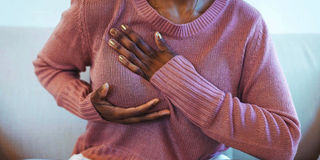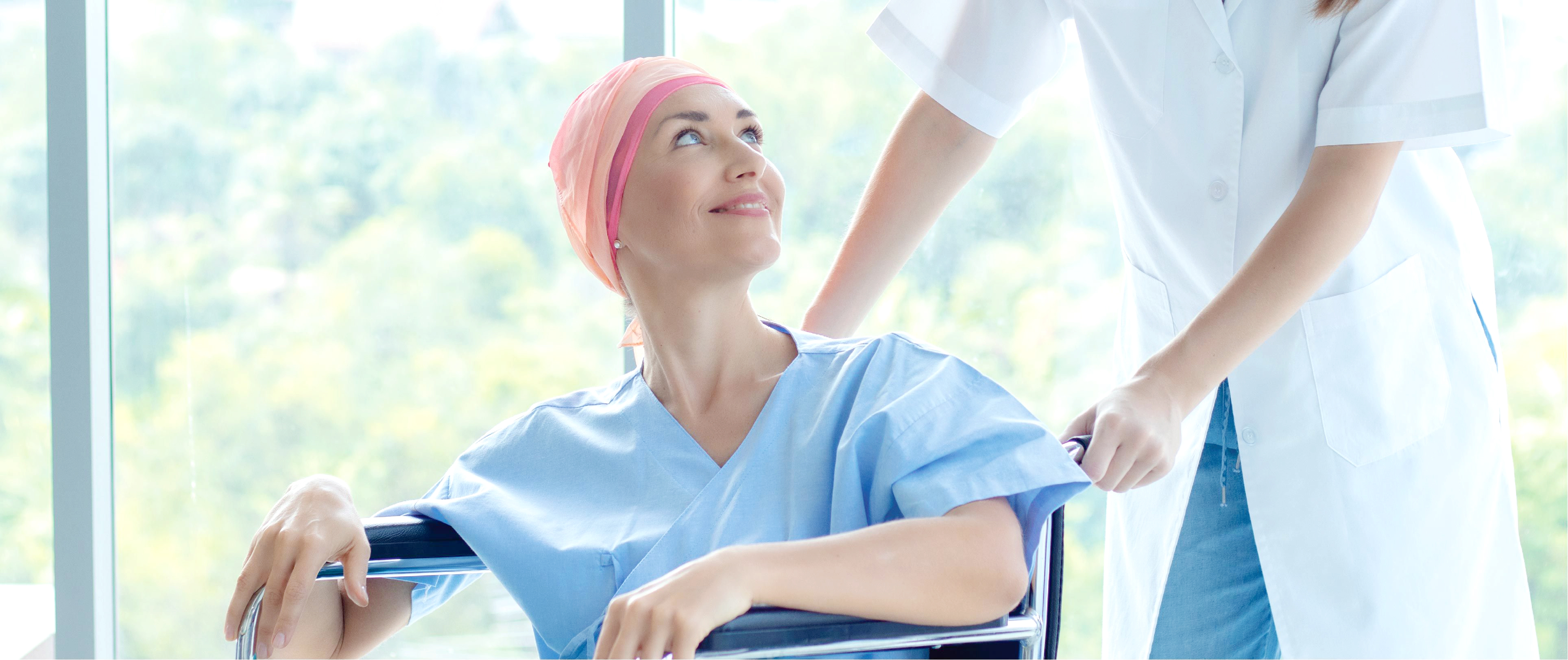Prime
All you need to know about breast cancer treatment

When it comes to your body, remember you are in charge. If you spot something unusual, speak to your doctor as soon as possible. PHOTO | SHUTTERSTOCK
After cervical cancer, breast cancer is the second commonest cancer affecting women in Uganda and, therefore, a public health concern.
According to Dr James Kafeero, an oncologist at the Uganda Cancer institute (UCI), breast cancer is curable and Uganda has all the capacity to treat it. Since both men and women are at risk of catching this type of cancer, it is important for one to know what a normal breast looks like.
“A monthly self-examination is a must. Anyone can get breast cancer but with early treatment, one can be cured,” he says, adding that annually, out of every 100 women that go for screening; there is a man that presents with breast cancer. The risk of breast cancer cuts across all genders; as long as one has a breast.
The earliest case of breast cancer he has seen was a 25-year-old woman although the average age for women who present with breast cancer is between 40 to 44 years.
Screening and diagnosis
There is a need for awareness and screening to aid early diagnosis. The testing begins with you, and once you suspect there is a lump in the breast, go to a health centre for further examination and guidance on what to do. The screening should be a painless procedure and done in one sitting.
According to Dr Kafeero, once you have a suspicious mass, you will have a non-painful exam and this screening should be free in public hospitals. The screening can include an ultrasound scan, which will cost between Shs10,000 and Shs30,000 in a private hospital. However, it is important to note that there are several things that can cause a lump in the breast including pus and breast milk (engorgement).
Depending on one’s age and how heavy the breasts are, one may also need a mammogram to help in the diagnosis of breast cancer and this cost between Shs100,000 to Shs120,000. If the mass still looks suspicious, one needs a needle aided biopsy to remove sample cells that a pathologist closely examines to give a confirmatory test. The biopsy, according to Dr Kafeero, is free except when one asks for private services.
“There are times when a doctor can confirm breast cancer even before the biopsy, especially in cases where there is ulceration, blood discharge from the breast, peeling of the skin, pain, change of colour, dimpling in the breast and nipple change. The biopsy must be done by using a needle to take off tissue cells from the suspicious lump,” he says.
Breaking the news
After getting the results, one is counselled to make it easier to receive the devastating news of a cancer diagnosis. After, the patient will be registered to start treatment.
According to Dr Noleb Mugisha, an oncologist at UCI, when someone is diagnosed with cancer, they may be anxious, depressed, have pain, are immune suppressed, may be hypertensive, diabetic and all these should be managed first and wait for the patient to stabilize before starting treatment.
“Counselling is important at this stage because so many patients find it hard to accept the diagnosis even when the indicators have always shown. Many people become depressed, believing that they are going to die. Some even reject the results,” he says.
Treatment
One also needs staging investigations which would help determine the level of the disease as well as classifying the type of breast cancer since different cancer types require different treatment combinations. Cancer is a painless disease and by the time a patient starts feeling pain, the disease has progressed and spread to other parts of the body.
“A patient will also need to do a chest x-ray, brain scan, kidney, liver and heart function tests, bone scan or muni-skeletal survey, which are usually offered at a subsidised cost. There is a committee that discusses one’s treatment plan, depending on the type, background and size of the tumour,” he says.
Chemotherapy, which is part of cancer treatment, uses anti-cancer drugs that kill the cancer cells with a curative intent, or prolonging life or to reduce symptoms of the disease. This is usually given intravenously but comes with a number of side effects since it usually kills both good and bad cells. The undesired effects include losing hair, nails, darkening, poor appetite, nausea, vomiting and diarrhoea. However, different people react differently to it.
This can also help to shrink the lump and depending on the assessment, one will require surgery to remove the breast. Dr Kafeero says in developed countries, because of good health seeking behaviour, some women are able to retain their breasts since the cancer is diagnosed early when the size of the lump is still small.
“Many of the women who come to the cancer institute present late when the masses are big and if we choose to only remove the lump, one is likely to remain with the cancer cells in the breast and one will definitely have a re-occurrence after treatment, which could lead to death,” he adds.
Radiotherapy
The next treatment phase is radiotherapy where one gets low doses of x-rays to kill cancer cells and shrink tumours. This radiation therapy usually begins about a month after mastectomy (surgery); it is typically given once a day, five days a week, for a period of time specified by the doctor on an outpatient basis. The doctor can also choose that a patient gets it before the surgery.
If the type of breast cancer is hormonal, one will require hormonal therapy and even after one is cured from the disease at the end of the treatment plan, they need constant review to avoid any likely re-occurrence.
Note
Breast cancer symptoms can vary for each person. Possible signs of breast cancer include:
● A change in the size, shape or contour of your breast.
● A mass or lump, which may feel as small as a pea.
● A lump or thickening in or near your breast or in your underarm that persists through your menstrual cycle.
● A change in the look or feel of your skin on your breast or nipple (dimpled, puckered, scaly or inflamed).
● Redness of your skin on your breast or nipple.
● An area that is distinctly different from any other area on either breast.
● A marble-like hardened area under your skin.
● A blood-stained or clear fluid discharge from your nipple.
Some people do not notice any signs of breast cancer at all. That is why routine mammograms and are so important.




